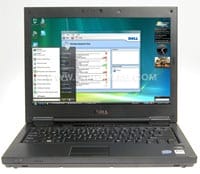-
Rocna Resetting Failures and Evaluation of Vulcan and Mantus
316 CommentsReading Time: 6 minutesMembersRead more: Rocna Resetting Failures and Evaluation of Vulcan and MantusWhen an anchor that thousands of sailors rely on has a dangerous flaw, we need to write about that. Also, some thoughts on the the Vulcan and the Mantus anchors.
-
Wow, Buying an Offshore Sailboat is Really Hard
199 CommentsReading Time: 3 minutesFreeRead more: Wow, Buying an Offshore Sailboat is Really HardJohn and Phyllis want to buy a 40-foot sailboat. There are thousands of second-hand boats for sale, but most of them are not fit to go offshore. So how do we weed through all the junk to find a decent and safe boat at a fair price? And what about refitting an older boat? This is the first of a series of articles to answer those two questions.
-
Learn From The Designers
16 CommentsReading Time: 5 minutesMembersRead more: Learn From The DesignersOne of the saddest things that can happen to a cruiser is buying a fundamentally bad boat, and there are plenty of those out there to tempt the uninformed. Here’s how to make sure that the boat you buy is well designed.
-
Arctic Solitaire: A Boat, A Bay, and the Quest for the Perfect Bear
29 CommentsReading Time: 5 minutesFreeRead more: Arctic Solitaire: A Boat, A Bay, and the Quest for the Perfect BearFirst a book and then an article get Phyllis thinking: What does respectful voyaging mean? How do we know if we have crossed lines as travellers that we shouldn’t have crossed?
-
Refitting an Old Boat Can Work…For Some
83 CommentsReading Time: 3 minutesMembersRead more: Refitting an Old Boat Can Work…For SomeWhen the subject comes up of buying an old and tired boat and refitting it as a way to get out there ocean voyaging inexpensively, John tends to start throwing around a lot of cold reality, and generally being a spoil sport. But sometimes this approach can work.
-
Little Bay Islands, Newfoundland—No Longer Facing The Sea
11 CommentsReading Time: 5 minutesFreeRead more: Little Bay Islands, Newfoundland—No Longer Facing The SeaBeautiful and remote, Little Bay Islands, Newfoundland, is a gem of an outport harbour. Phyllis writes about the village’s struggle to stay viable and how it resolved.
-
Specifying Primary Anchor Size
195 CommentsReading Time: 7 minutesMembersRead more: Specifying Primary Anchor SizeHow to select the size and material (galvanized steel, stainless steel or aluminium), for the primary anchor on a cruising boat.
-
The Five Great Lakes
34 CommentsReading Time: 6 minutesFreeRead more: The Five Great LakesTucked into the heart of North America, five hundred miles from the sea, lies one of the world’s great adventure cruising grounds. A quarter-million square kilometres of water, and seventeen thousand kilometres of coastline, call out to sailors seeking a season or two off the beaten path.
-
Susie Goodall’s Series Drogue Failure
98 CommentsReading Time: 7 minutesFreeRead more: Susie Goodall’s Series Drogue FailureSusie Goodall was one of the few competitors in Golden Globe Race 2018 with a series drogue to Don Jordan’s design. But it failed her, and her boat pitchpoled What went wrong and does Susies’ terrible experience indicate a fundamental problem with the series drogue and/or Don Jorgan’s science and engineering? John digs in to find out.
-
SPADE, SARCA Excel, or Some Other Anchor?
40 CommentsReading Time: 6 minutesMembersRead more: SPADE, SARCA Excel, or Some Other Anchor?In the last two chapters we have reviewed the SPADE and SARCA Excel anchors. So which of the two is best, and are there other anchors as good or better? We also cover four anchors we should never use.
-
Golden Globe Race 2018—It Didn’t Have to Be That Way, and How to Fix It
114 CommentsReading Time: 6 minutesFreeRead more: Golden Globe Race 2018—It Didn’t Have to Be That Way, and How to Fix ItNow that the Golden Globe 2018 is nearly over, it’s time to figure out why it turned into a demolition derby, and how to fix it so that there will be future editions.
-
A Sailing Fairy Tale
8 CommentsReading Time: 4 minutesFreeRead more: A Sailing Fairy TaleWe pursue a technical vein here at AAC. But sometimes it’s nice to take a break from anchors and electrons. To that end, John is trying his hand at fiction.
-
4 Vital Anchor Selection Criteria and a Review of SPADE
149 CommentsReading Time: 12 minutesFreeRead more: 4 Vital Anchor Selection Criteria and a Review of SPADEEveryone loves to tout the benefits of their favourite anchor, John included, but this article is about much more: how to cut through all the claims to the criteria that really matter when selecting an anchor.
-
15 Steps To Getting Securely Anchored
59 CommentsReading Time: 10 minutesFreeRead more: 15 Steps To Getting Securely AnchoredWhen thinking about anchoring, it’s easy to just focus on gear, but good technique can contribute at least as much to getting securely anchored. These steps, based on 40 years of experience, make getting securely anchored easy and repeatable.
-
Beware Marine Equipment Awards
31 CommentsReading Time: 3 minutesFreeRead more: Beware Marine Equipment AwardsAre the gear awards given by panels of marine journalists useful and worth your time?
-
UV Protection For Roller Furling Sails
38 CommentsReading Time: 4 minutesMembersRead more: UV Protection For Roller Furling SailsA headsail that is not protected from sun damage when furled, will only last a season or so. So what’s the best way to protect the sail? John has some suggestions.
-
Sable Island, Nova Scotia—A Remote, Desolate, and Gorgeous Place
8 CommentsReading Time: 5 minutesFreeRead more: Sable Island, Nova Scotia—A Remote, Desolate, and Gorgeous PlaceWhen the GFS GRIB data suggested that in twelve days there would be calm seas at Sable Island, Molly and family were inspired to organize a visit to this remote, desolate and gorgeous place.
-
Nigel Calder’s Integrel, Part 2—Is It Really Better Than a Generator?
60 CommentsReading Time: 7 minutesMembersRead more: Nigel Calder’s Integrel, Part 2—Is It Really Better Than a Generator?In Part 1 we concluded that Integrel was too expensive and complicated to be of use to cruisers who have reasonably modest daily power needs. But what about those of us who want all the comforts of home and therefore use a lot of power in the run of a day, or even those with one foot in each camp?
-
Nigel Calder’s Integrel, Part 1—What You Need To Know
76 CommentsReading Time: 11 minutesMembersRead more: Nigel Calder’s Integrel, Part 1—What You Need To KnowNigel Calder’s newest machine, that claims to revolutionize electrical systems on boats, has generated a huge amount of excitement. So is this thing a good product that we should buy? Let’s dig in and find out.
-
SARCA Excel Anchor—A Real World Test
57 CommentsReading Time: 11 minutesMembersRead more: SARCA Excel Anchor—A Real World TestColin’s in-depth, real-world test and review of the SARCA Excel anchor, based on a season of use in a cruising ground that is notoriously difficult to anchor in.
-
Cruising Boat Electrical System Design, Part 3—Specifying Optimal Battery Bank Size
58 CommentsReading Time: 10 minutesMembersRead more: Cruising Boat Electrical System Design, Part 3—Specifying Optimal Battery Bank SizeIn the last two chapters we took a deep and considered dive into analyzing the electrical loads on our boats and thinking about ways to reduce said loads through smart systems thinking. Now we get to the payoff: How to calculate optimal battery bank size or, alternatively, how to live with the battery bank size we already have. I have built a spreadsheet to make the whole process easier.
-
Cruising Boat Electrical System Design, Part 2—Thinking About Systems
11 CommentsReading Time: 5 minutesMembersRead more: Cruising Boat Electrical System Design, Part 2—Thinking About SystemsIn the last chapter we looked at some big loads that take electricity from our battery. In this chapter John covers watermakers and diesel furnaces and shows how system thinking can save us from having to install a silly-sized battery bank.
-
Cruising Boat Electrical System Design, Part 1—Loads and Conservation
59 CommentsReading Time: 10 minutesMembersRead more: Cruising Boat Electrical System Design, Part 1—Loads and ConservationTwo core decisions we must make when designing a cruising boat electrical system for living aboard full time and making offshore voyages, are the size of the battery bank and which charging sources we will need: generator, solar, main engine, wind, etc. But the first thing we need to do, before getting into all that fun stuff, is think about electrical consumption and how to keep it reasonable.
























